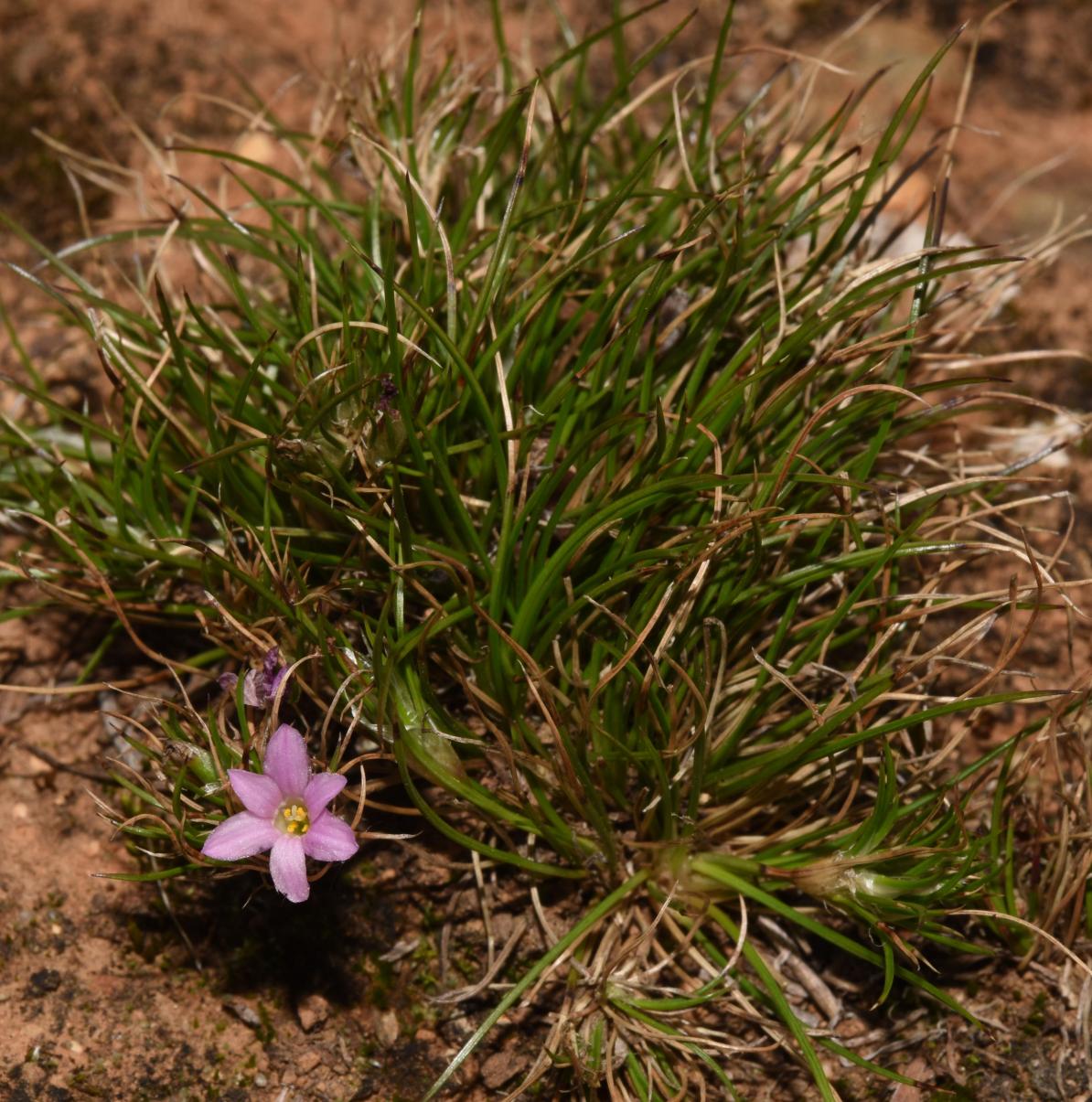Name:Guang-Wan Hu
Tell:
Email:guangwanhu@wbgcas.cn
Organization:Wuhan Botanical Garden
Researchers Report the Complete Chloroplast Genome of Acanthochlamys bracteata (China) and Xerophyta (Africa)
2021-08-31
Velloziaceae is a monocot family that is made up of five genera and c. 250 species with a disjunct distribution in Africa mainland, Madagascar, Arabian Peninsula, China and South America. They are recognized as the largest lineage of vascular plants that can tolerate desiccation, hence are resurrection plants. The family is one of the classical examples of “Taxonomic nightmares” among plants, due to its floral similarities and the huge variability in the morphological features in terms of leaf forms, sizes and life forms among others. Thus, relationship among the members of this family is still unclear.
Flora and Plant Taxonomy in Eastern Africa Research Group of Wuhan Botanical Garden analyzed the complete chloroplast (cp) genomes of Acanthochlamys bracteata collected from Hengduan Mountains, China, and did both molecular and morphological comparative analysis with two African Xerophyta species (Xerophyta spekei and Xerophyta viscosa).
The cp genomes of Acanthochlamys bracteata, X. spekei, and X. viscosa are 153,843 bp, 155,235 bp, and 155,498 bp respectively. The cp genomes consist of inverted repeats (IRs) (IRa and IRb), each with a length ranging from 27,022 bp to 27,110 bp in the three species. The Large Single-Copy (LSC) region in the three species shows length ranging from 81,919 bp - 83,813 bp and Small Single-Copy (SSC) region (17,387 bp - 17,880 bp).
The phylogenetic analysis shows that Acanthochlamys bracteata P.C. Kao is the early diverged species in the family Velloziaceae because it is sister to the rest of the Velloziaceae species (Figure 1). In terms of morphological and anatomical comparisons, Acanthochlamys is different from the rest of the family (Velloziaceae), with exception of sieve tube plastids. The family Velloziaceae currently is governed by four-character states: persistent leaves, presence of abscission zones, two phloem strands and violet tepals. Despite their geographical occurrences, they fit the classification into similar taxa.
The research entitled “Complete Chloroplast Genomes ofAcanthochlamys bracteata (China) andXerophyta (Africa) (Velloziaceae): Comparative Genomics and Phylogenomic Placement” was published in Frontiers in Plant Science, section Plant Systematics and Evolution.
This work was supported by grants from the International Partnership Program of Chinese Academy of Sciences, Sino-Africa Joint Research Center, CAS and The ANSO Scholarship for Young Talents, PhD Fellowship Program University of Chinese Academy of Sciences, China.
Kenyan student Vincent Okelo Wanga, together with Chinese student DONG Xiang are the co-first authors. Professor HU Guangwan is the corresponding author. Several students from the group participated in the study.

Figure 1. Phylogenetic relationship of the three species of Velloziaceae based on 59 single-copy genes shared by all cp genomes. (A)The Maximum likelihood (ML) tree with bootstrap value on the branches; (B) Bayesian inference (BI) tree with posterior probabilities values on the branches (Image by WBG)

Figure 2. Photo of Xerophyta spekei Baker (Taken by Prof. HU Guangwan in Chyulu Hills, Kenya)

Figure 3. Photo of Acanthochlamys bracteata P.C. Kao from China (Taken by Prof. HU Guangwan in Sichuan, China)